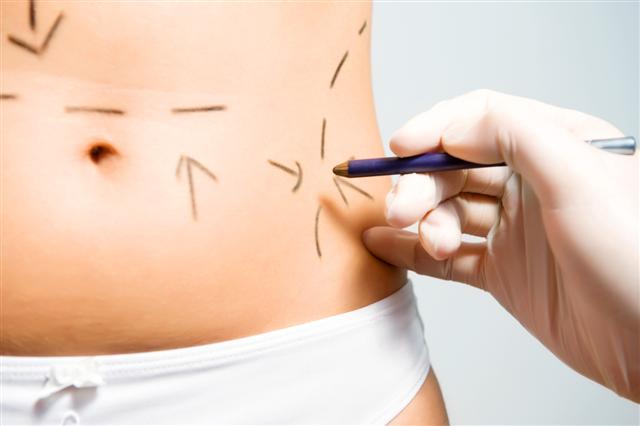“He is the best!”
Melanie loves the results of her mini facelift (Band Aid Facelift) and upper blepharoplasty or eyelid surgery. She comments on her experience with Dr. John LeRoy and his staff.
Melanie loves the results of her mini facelift (Band Aid Facelift) and upper blepharoplasty or eyelid surgery. She comments on her experience with Dr. John LeRoy and his staff.

A.) Yes, a traditional tummy tuck is a significant procedure, which is why I refined the comparable “mini” version for those patients who could benefit from a tummy tuck, but don’t necessarily need the full procedure. I use a different technique with the Band Aid version, only targeting the areas that need the most attention. This technique requires a shorter incision, and can therefore be performed in-office with local anesthesia.
Q.) What are the main differences in the Band Aid Tummy Tuck and the traditional tummy tuck?
A.) The incision for the Band Aid Tummy Tuck is significantly smaller than the incision required with the traditional procedure. Instead of excising fat and skin across the entire tummy, I focus solely on those areas that need attention. The most significant difference, though, is the shorter recovery time associated with the Band Aid Tummy Tuck.

The type of breast implant you select for breast augmentation truly is a matter of personal preference. Surgically speaking, both saline breast implants and silicone breast implants are safe. It’s important to speak with your prospective plastic surgeon before breast enhancement surgery not only about the type of breast implant, but also about the shape and size as those factors will also heavily influence your overall breast surgery results. Many plastic surgeons will allow you to “try on” the different types and sizes of implants during consultation to get an idea of consistency, shape, and weight.
Do breast implants change how often I should receive mammograms?
Breast enhancement patients should receive a mammogram before their surgery to serve as a benchmark to compare post-surgery mammograms. According to current U.S. Preventive Services Task Force (USPSTF) guidelines, women over the age of 50 should receive mammograms as directed by their physician (typically every two years) (The National Cancer Institute recommends: Women 40 years and older should get a mammogram every 1 to 2 years). If you are a patient with a family history of breast cancer it’s even more important to receive regular mammograms, as directed by your physician for preventative measures.
The most important thing to remember when contemplating plastic surgery is to do your research. Before you even schedule a consultation, you should ensure that your perspective plastic surgeon is board certified. Once you make sure he/she has the proper credentials, it’s important to properly prepare for your cosmetic surgery consultation. Write down your questions and take them with you to your appointment. Really analyze what you’re hoping to accomplish with plastic surgery and be able to communicate that with your surgeon so he/she can make sure you’re pursuing the surgical procedure that will deliver the cosmetic results you’re after.
Make sure you also request to view the plastic surgery results of your surgeon’s previous patients. Whether you seek breast augmentation or facelift surgery, you should be sure that your surgeon can accomplish the cosmetic change you’re seeking. Often, portions of a plastic surgeon’s website will contain patient testimonials where you can hear, in the patient’s own words, about their experiences.
To view some of Dr. LeRoy’s patient testimonials, before and after gallery, or gain more information about the plastic surgery procedures he offers visit the appropriate links above.